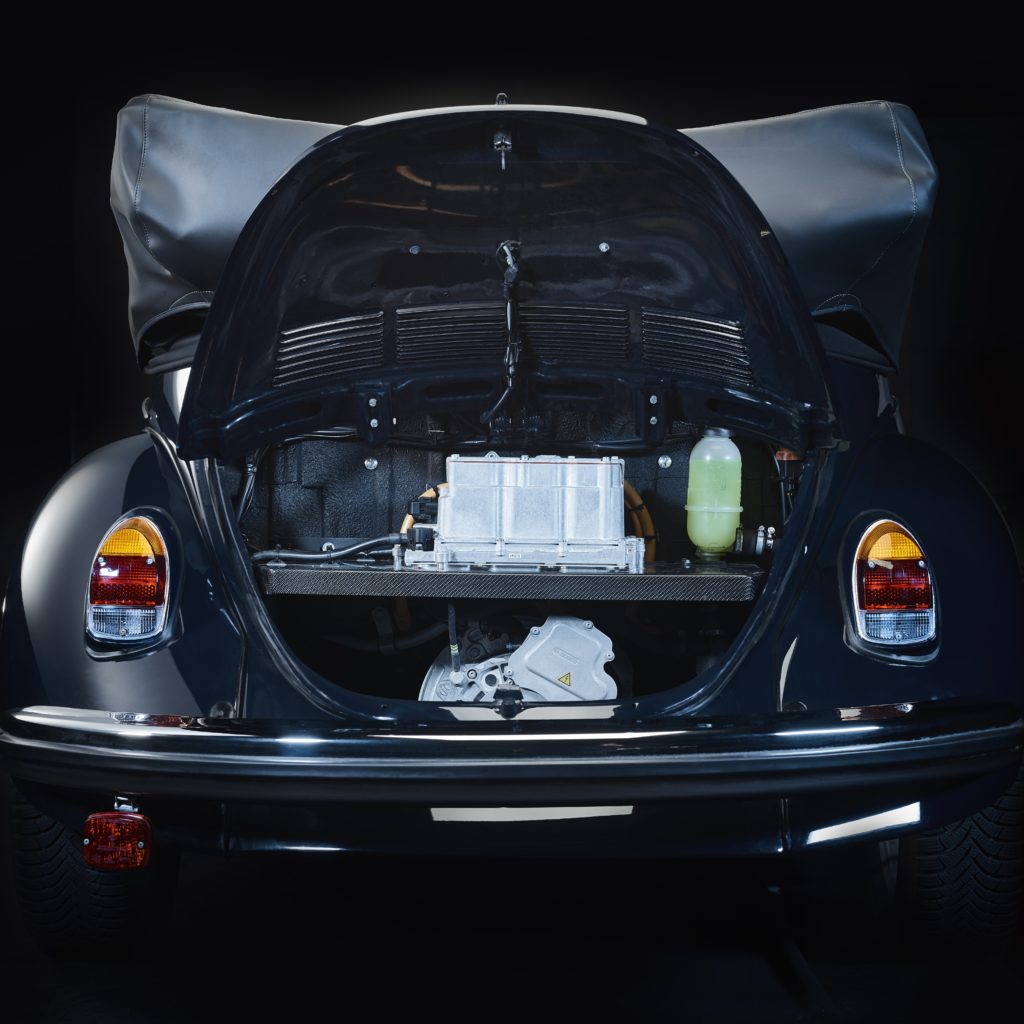Einen Moment bitte
Anfrage Erfolgreich
Wir senden Ihnen zeitnah ein Angebot!
17 Mar 2021

Whether at the regulars’ table, the classic car meeting or in the online forum, the topic of electric drive in classic vehicles is polarising. For some, it borders on blasphemy to replace the original combustion engine with a battery-powered motor. Others see it as an opportunity to move with the times and move their treasures in everyday life in an environmentally conscious way with a new heart.
Electric cars are not a completely new invention. The history of the first battery-powered vehicle goes back to 1888. The Flocken electric car was developed in Coburg, Upper Franconia, and had an impressive output of 0.9 KW, a range of 12 km and a maximum speed of 15 km/h. The development was rapid and by the year 1888 the first battery-powered car had been built. The development was rapid and by the turn of the millennium, e-vehicles had a proud 38% market share in the USA. But with the invention of the electric starter for petrol engines, which replaced the difficult cranking, and the ever cheaper crude oil, e-vehicles were increasingly rare until the 1920s.
It was not until the 1990s and growing environmental awareness that electric vehicles were able to slowly shed their niche existence. More and more advanced battery types increased the range and thus also improved the suitability for everyday use. With Tesla in the lead, almost every major car manufacturer now has at least one model with hybrid or pure e-drive in its range.
With the constant development and simplification of technology, more and more classic and youngtimers are appearing with alternative drives. The motivation for converting a classic car varies. Many want to increase the practical benefits and move their classic car carefree in everyday life without spending hours in the workshop every week. For this purpose, the combustion engine, which is prone to repairs, is replaced by the practically maintenance-free electric motor. As a rule, the original appearance, both inside and out, can be retained. Components such as control units, cooling and batteries can be cleverly hidden thanks to their compact design.
Others want to give their treasure a little performance boost and set an example in terms of environmental awareness. Popular candidates are, for example, the VW Beetle or the Fiat 500. Compared to the rather weak petrol engines with which they rolled off the production line, a high-torque electric motor provides a whole new level of driving pleasure.
However, many enthusiasts also argue against the Frankenstein transplant. For them, it is the sound backdrop and the smell of oil that make up the really true classic car experience, and a quietly humming, emotionless electric motor simply cannot compete. They perceive the waiting and screwing on the fuel guzzler not as suffering but as a blessing. Furthermore, they fear the loss of resale value of the rolling cultural assets in the case of permanent conversions, because this is usually measured in terms of the degree of original preservation.
Zum Vergleich hier einmal drei verschiedene Wege für eine Umrüstung am Beispiel eines VW Käfers.
Wer nicht davor zurückschreckt, selbst zu schrauben, kann mit der Do-It-Yourself Variante von EV-Europe sparen. Diese startet bei rund 8.000 Euro, exklusive Batterien. Für die Akkus werden dann je nach gewünschter Reichweite nochmal 5 bis 20 Tausend Euro extra aufgerufen. Die Firma Voltimer aus Baden-Württemberg wirbt mit erschwinglichen Preisen unter 30 Tausend Euro für den Komplettumbau und Reichweiten von 70 km. Wer bereit ist bis zu einhundert Tausend Euro zu investieren, kann sich den e-Käfer der Manufaktur Murschel bestellen. Dieser kommt dann aber auch mit einer Reichweite von über 200 km, modernisiertem Fahrwerk und Innenraum.
From a rational point of view, it is probably clear to everyone that the conversion, despite the savings potential of the alternative drive, will never really pay off in the lifetime of the classic car. But as is often the case with our beloved hobby, not everything makes financial sense and it doesn’t have to. For us, it’s all about having fun and at the same time preserving old metal as a cultural asset on German roads, whether it’s the original or a battery-powered replacement.
Feel free to visit our other articles on the topic of 3D printing and reconstruction for vintage and classic cars.
In the blog, we report on our experiences in the field of rapid prototyping and the manufacturing processes used for spare parts reconstruction.